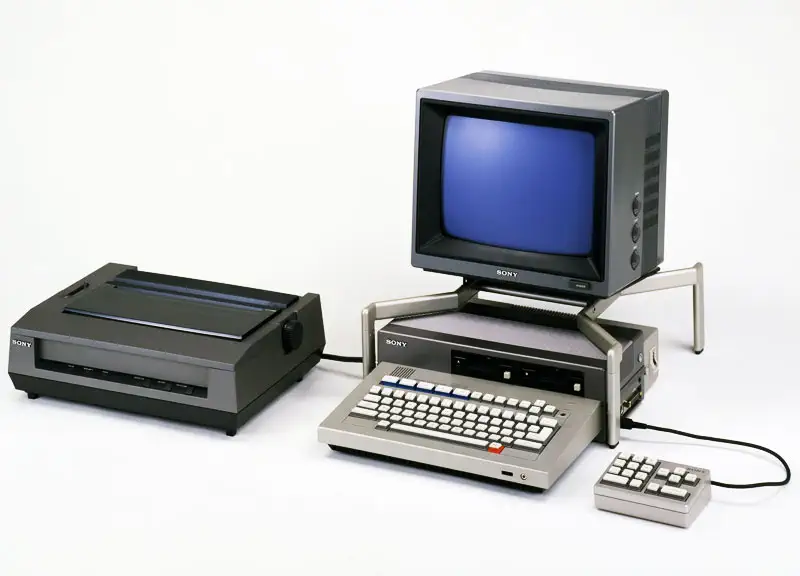Introduction
The SMC-70 computer was introduced in 1982. The computer distinguished itself by having 16-color graphics and the ability to display Kanji-characters. It was one of the first computers to use the 3.5" disk drive technology developed by Sony.
Sony Disk BASIC was installed in ROM, and the machine was capable of running CP/M software. RAM could be expanded to 256 KBytes. An optional 16-bit 8086 CPU expansion board (SMC-7086 CPU Board) could be added, giving the unit the ability to address 768 KByte of RAM and run MS-DOS applications.
External ports:
- Parallel Centronics printer port
- RS-232C serial port, 75-19200 baud
- Analog RGB out
- B/W Composite video out
Zilog Z80 CPU Family
The Z80 quickly became popular in the personal computer market, with many early personal computers, such as the TRS-80 and Sinclair ZX80, using the Z80 as their central processing unit (CPU). It was also widely used in home computers, such as the MSX range, SORD, and the Amstrad CPC, as well as in many arcade games. Additionally, it was also used in other applications such as industrial control systems, and embedded systems. The Z80 was widely used until the mid-1980s, when it was gradually replaced by newer microprocessors such as the Intel 80286 and the Motorola 68000.
The Z80 microprocessor was developed by Zilog, a company founded by Federico Faggin in 1974. The Z80 was released in July 1976, as a successor to the Intel 8080. It was designed to be fully compatible with the 8080, but also included new features such as an improved instruction set, more powerful interrupts, and a more sophisticated memory management system.
The Z80 quickly became popular in the personal computer market, with many early personal computers, such as the TRS-80 and Sinclair ZX80, using the Z80 as their central processing unit (CPU). It was also widely used in home computers, such as the MSX range, SORD, and the Amstrad CPC, as well as in many arcade games. Additionally, it was also used in other applications such as industrial control systems, and embedded systems. The Z80 was widely used until the mid-1980s, when it was gradually replaced by newer microprocessors such as the Intel 80286 and the Motorola 68000. The design was licensed to Synertek and Mostek as well as the European SGS.
The Z80s instruction set is binary compatible with the Intel 8080, so that 8080 code such as the CP/M Operating System and Intel's PL/M compiler for the 8080 can run unmodified on the Z80. The Z80 had many enhancements over the 8080 such as 16-bit data movement instructions, block copy and block I/O instructions, single bit addressing of all registers, IX/IY offset registers, better interrupt system and a complete duplicate register file for context switching during an interrupt.
Source: WikiPedia

ROM: 48kB
VRAM: 32kB Sound Chip none Sound 3 square wave generators Display Chip Sony Display LSI Display 80x25 text
320x200 16 color
640x200 4 color graphics. Best Text 80x25 Best Color 16 colors Best Graphics 640x200 in 4 colors Sprites n/a System OS CP/M, Sony Disk Basic Storage Internal 3.5" Floppy Disk Drive.

